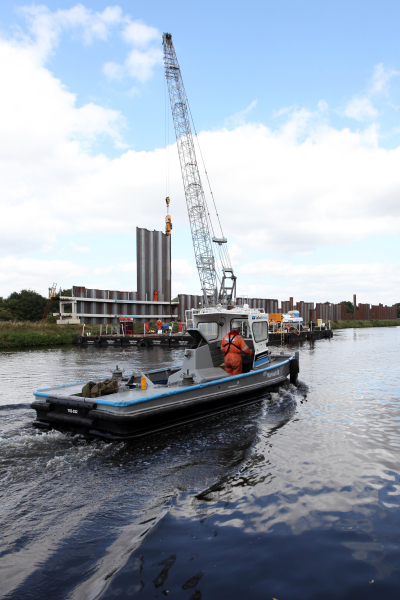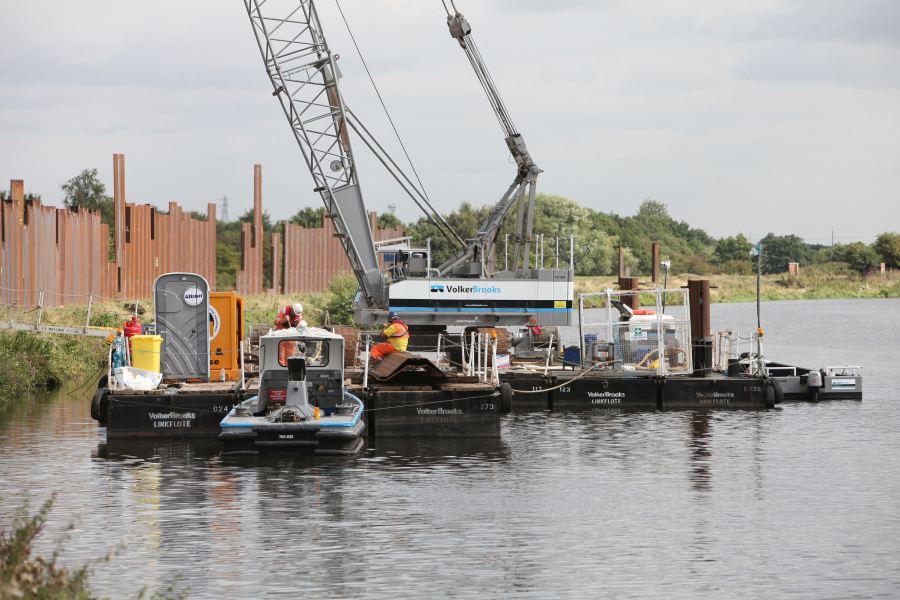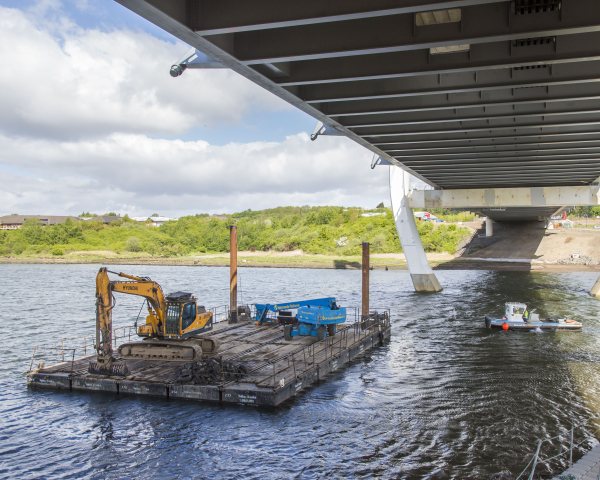
Arksey Slips embankment stabilisation
The right bank of the River Don between Mile Thorn Sidings and Long Sandal Lock, on the north east outskirts of Doncaster has a long history of instability. The Environment Agency had noted a failure of the river bank on a section between the River Don and the adjacent Stainforth and Keadby canal, which had been caused by a combination of erosion of the river bank toe and high water pressures due to high river levels and leakage from the canal.
In the late spring of 2013, the Environment Agency awarded parent company, VolkerStevin a contract for the stabilisation works to the river bank, through the construction of a steel sheet piled wall 1.2km in length through the existing embankment.
Due to the restricted width of the embankment, between the river and canal and lack of road access, piling work could only be completed from a floating Linkflote platform, mobilised within the River Don. VolkerMarine Services also arranged for additional plant and materials to be floated down river from the main work site, to maintain work progress.
The ground conditions underlying the river bank were predominantly soft clays to the full extent of the maximum 12m length of AZ 12 - 700 sheet piles. Piles were driven into the bank through the use of a vibratory hammer and then completed by back driving with a hydraulic impact hammer, when more resistant clay soils were encountered. All piling plant was crane suspended from a 70 tonne machine, supplied by VolkerMarine Services, which was mounted and stabalised on the pontoon platform.
The works completed now provides a complete barrier through the river bank, which will stabilise the existing material and prevent any further deterioration of the area between river and canal.









